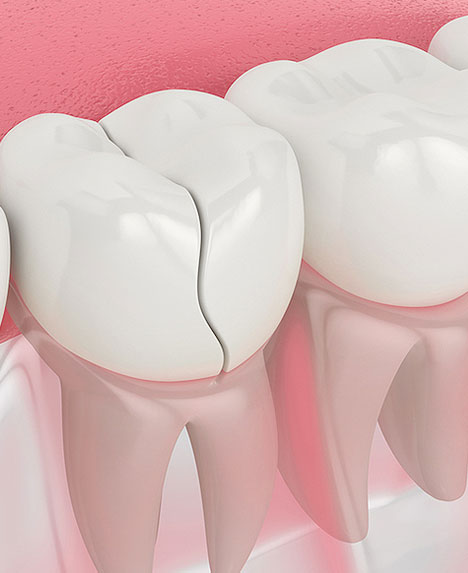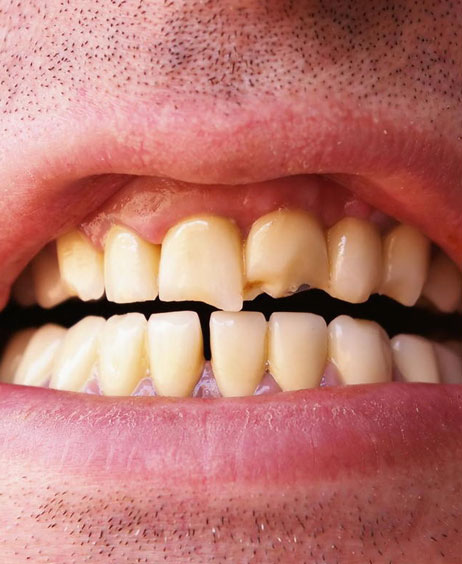Treatment of
Cracked ToothGreat dental staff. Love the new hygienist. Everyone is helpful, the office is lovely and they are excellent with someone like me who has always had a terror about dental work. I definitely would recommend to all who are looking for excellent dental care.
- Carla W.
4.9


A cracked tooth can be due to chewing on hard foods and grinding your teeth often, and can even occur as you age. It’s a common condition and the leading cause of tooth loss in many people around us.
Causes of a cracked tooth
Teeth crack due to a combination of issues, including:
- Pressure from teeth grinding
- Fillings so large weaken the virtue of the tooth
- Chewing or biting hard foods like candy
- Blows to the mouth, due to a car accident, sports injury, fall, or even a brawl.
- Sudden changes in the mouth temperature. From eating something hot and then trying to cool your mouth with ice water.
- Age, most teeth cracks occur in people above 50
Give us a call to schedule your next appointment.
Types of cracked
Teeth
Cracks can appear as:
- Craze lines. These are super-small crevices in the tooth enamel. They cause no pain and don’t require any oral treatment.
- Fractured cusp. This type of crack typically occurs around a filling. It usually doesn’t impact the tooth pulp, which is a soft tooth center where nerves, connective tissue, and blood vessels are located and as a result, doesn’t cause much pain.
- Cracks that extend into the gum line. A tooth with a vertical crack that extends through it but hasn’t yet reached the gum line can be treated easily. However, if the crack grows into the gum line, that tooth may need to be removed. Quick treatment offers the best chance of preserving the tooth.
- Split tooth. It is a tooth with a crack that spans from its surface to below the gum line. It can be separated into two components. With such an extensive crack, it’s dubious the entire tooth can be saved, but our Gainesville dentist can save a bit of it.
- Vertical root fracture. This type of crack starts below the gum line and crosses upward. It often doesn’t show many signs, unless the tooth gets infected. Chances are that the tooth will have to be extracted.
Diagnosing a cracked tooth
X-rays don’t also disclose a cracked tooth, and not everyone has typical signs. To help diagnose a cracked tooth, our dentist will probably do the following:
- Ask about your dental history, like if you chew on a lot of hard foods or grind your teeth.
- Make an observable examination. Your dentist may need to use a magnifying lens to see remote cracks.
- Feel for the crack. Your Gainesville dentist may run a dental explorer over and about the tooth to see if it “catches” on an edge.
- Use a dental dye, that makes the crack stand out.
- Examine your gums for inflammation. This technique helps determine vertical cracks, which can irritate gums.
- X-ray your teeth. While this won’t reveal the crack, it can point out flawed pulp, which indicates a crack.
- Did you bite down on something? If you have a cracked tooth, you may feel discomfort when you release your bite.At our dental office in Gainesville, we have the best dentist to solve your oral issues & provide you with a beautiful smile. If you have a cracked tooth you must get it fixed by seeking the right treatment for restoring your smile. Contact Saddlebrook Dental & Orthodontics today for fixing your cracked teeth.
Input your text here! The text element is intended for longform copy that could potentially include multiple paragraphs.


